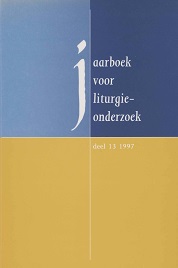Vroeg-middeleeuwse Martinusverering. Van lokale grafcultus naar liturgische viering
Abstract
In this article I have traced the emergence of the early medieval cult of St. Martin of Tours and consider influences on the development of the associated liturgical and hagiographical texts. As is well known, the veneration of every saint is in the beginning a local affair, centred around the holy person’s grave. Accordingly in the case of St.Martin, veneration is first attested in his own city of Tours. This veneration is attested by the hagiographical works of Sulpicius Severus, Paulinus of Périgueux, Venantius Fortunatus and Gregory of Tours. The earliest evidence for liturgical veneration is found in the historical works of the latter, written in the 6th century. In following centuries, the cult of St. Martin develops into an official, widespread liturgical commemoration. The importance of Martin as the Frankish national patron is shown by the fact, that the saint is venerated with two feasts: His dies natalis on november 11th, and the translation of his relics on July 4th. The earliest liturgical texts are not found until the 8th century, where they occur in the most important Gallican sacramentaries. These texts are significantly inspired by the hagiographical texts. The import of the Roman liturgy into the Gallican rite gradually influenced the Gallican liturgy. Careful analysis of the liturgical texts of St. Martin gives a good example of the way how the Roman liturgy put an end to the special character of the Gallican rite. As the Roman influence on the Gallican liturgy increases, the liturgical texts for St. Martin’s feasts get a more abstract and impersonal character.


